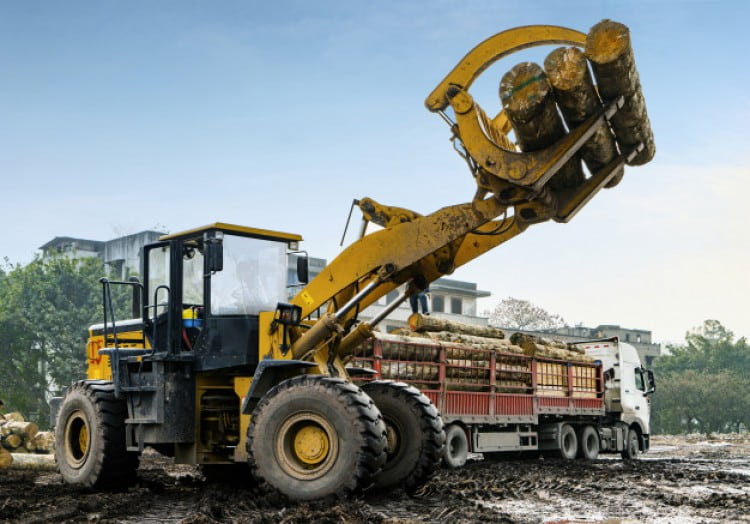
The wood cutting and logging industry, otherwise known as the forestry sector, has developed significantly for the past recent years. This is especially true when it comes to the technology being used by loggers around the world, with more and more companies switching to more environmentally, innovative technologies and practices in their harvesting operations.
This need to transition to more efficient and sustainable forestry operations can be attributed to the changing perspective of the general consumers towards logging. As more and more people are aware of global warming and deforestation, the pressure for timber companies to invest in fewer machineries, reduce waste on site, cause less soil disturbance, and avoid scarring of surrounding trees have also surmounted.
If you plan to invest in new equipment for your forestry and your current practice is full tree forestry, it might be time to start migrating to cut to length forestry. Cut to length (CTL) is a type of forest harvesting that is considered the most technologically advanced system designed to address multiple persisting issues in the logging sector.
CTL has a lot of advantages compared to full tree logging, first of which is that utilizes fewer machines and require less manpower, making it an ideal setup in regions where both fuel cost is high, and source for skilled personnel is limited and quite expensive.
CTL also allows for lower operational and overhead costs since the number of equipment on site is limited, and the chances for downtime due to unexpected breakdowns and regular maintenance is also reduced. Finally, you have the lower environmental impact on the forest with the cut to length technology.
Read on as we discuss in detail in this post the ways Cut to Length harvesting method is slowly changing the forestry sector.
Less Operational Cost
CTL harvesting only needs a harvester and a forwarder working in the forest to get the cut trees back to the landing for further transportation. This means that two workers can manage the whole operations within the forest, meaning you’ll be able to spend less on the workforce and at the same time compensate your workers more effectively.
Operating fewer equipment on-site also means fewer expenses on fuel, as well as on maintenance. If you have some equipment downtime, you only have two persons waiting or repairing the machines, while in full tree you might have four machines standing to wait for the one that is down.
Less Soil Disturbance
The environmental impact of dragging the whole tree through the forest versus leaving tops and branches to protect the forest is significant. When you drag the trees from the harvesting site to the landing, you damage the top layer of the soil that protects the forest, which can significantly impact the regrowth of trees and even cause soil erosion over the long haul.
With CTL, the tops and branches are removed directly on harvesting site, thus enabling the logger to use a forwarder rather than a skidder. Leaving the branches and tops on-site also results in a protective debris mat that further protects the soil from rutting and compaction.
Increased Efficiency and Productivity
Operating CTL harvesters is undoubtedly not an easy task – CTL operators in some parts of Europe have to study for two years just to be a licensed CTL operator. However, such initial challenges will certainly pay off as soon as the operator has learned to control the machine effectively.
Compared to the whole-tree cut system, CTL combines the work of three machines (feller buncher, delimber, and slasher) into one, and does all of the processing in the woods. This means that less space is needed for the landing area and that the forwarder can move around the site more efficiently. And since a forwarder – which can maneuver well on softer ground – is used instead of skidder, CTL loggers can also work more often throughout the year, even during the rainy season when the forest has a muddy surface.
Fewer Investments for Different Tires
Forestry tires are high tech products that require a mention of their own. The tires contribute to the safety of the logging operations as well as the productivity of the workers. Unfortunately, heavy duty tires specifically designed to handle forest terrain can be quite expensive, especially if the harvesting method used is the conventional full tree logging, which requires different tires for the feller buncher, skidder, and forwarder.
The tires need to be durable to make sure that they can handle the harsh working environment with stubs and rocks that can easily damage your tires. If your tires don’t have the grip regardless of the weather or surface, it will drastically slow down your operations. For skidder tires, you will need to be able to drag heavy trees through the forest in rough terrain. This puts a lot of pressure on the tires.
In the case of CTL, logging companies will be able to minimize the cost of new tires since they will only need to invest in innovative CTL machine tires and forwarder tires. The cost-savings that the forestry company will be able to save in this area can then be invested in other areas crucial for the growth of the company.
So if you plan to invest in new equipment, maybe this is your chance to improve the process and productivity of your logging business. Moving to cut to length might not be the easiest step to take, but the lower operational cost to get it up and to run with only 2 machines should be an incentive to start thinking about it, and with raising employment costs, the lower amount of employees should be an additional benefit. If you also own the forest, then you have the other benefits that the impact on the forest is lower than with full tree harvesting.
